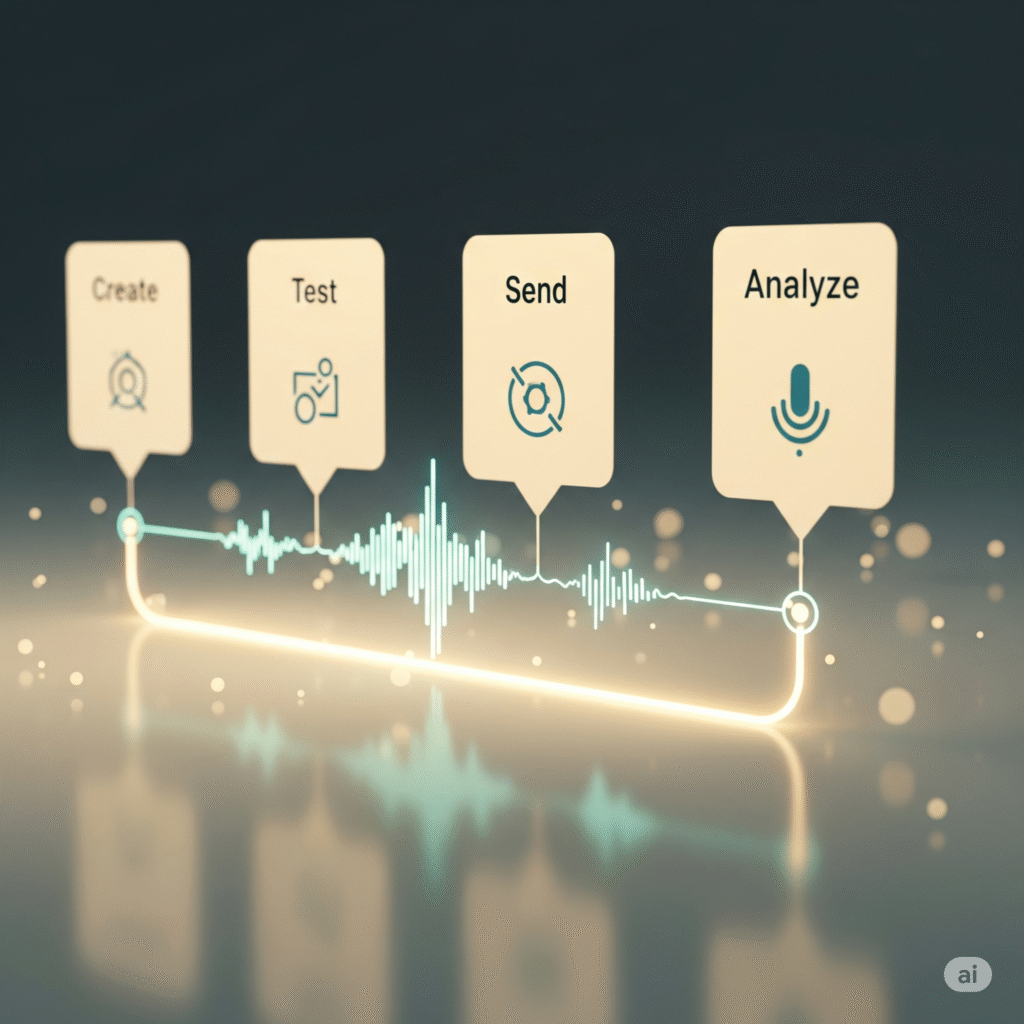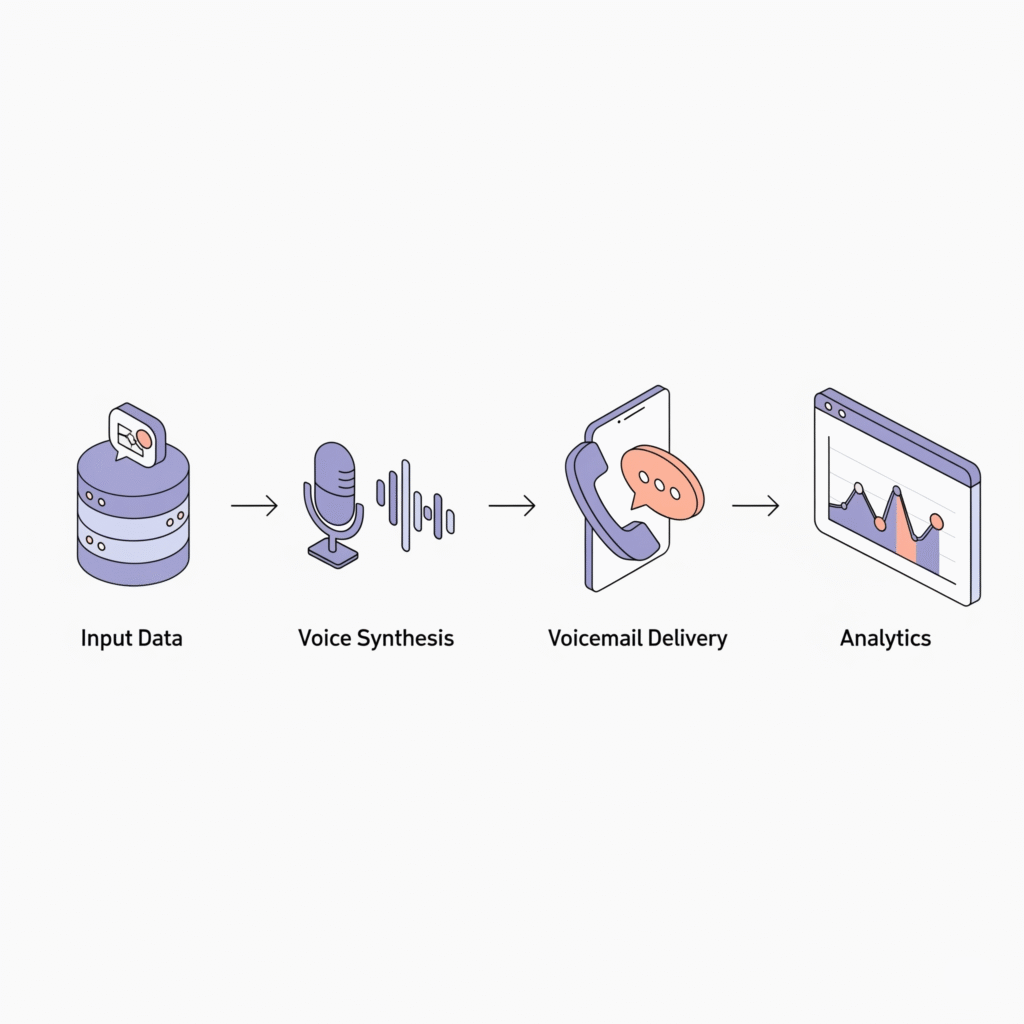Ringless Voicemail in Non-Sales Use Cases: HR, Schools, Nonprofits & More
Measuring and Optimizing Your Ringless Voicemail Campaigns in Non-Sales Use Cases
Ringless voicemail is not just a powerful sales tool, it’s an increasingly popular communication method for non-sales use cases such as HR notifications, school announcements, nonprofit outreach, and community engagement. These organizations benefit from the ability to deliver clear, direct messages to large groups without interrupting their daily routines.
However, simply sending out ringless voicemail messages isn’t enough. To maximize the effectiveness of your campaigns, measuring key metrics and optimizing your strategy based on data-driven insights is essential. This ensures your messages reach the right people, at the right time, with the right content driving higher engagement and better outcomes.

Why Measurement is Critical for Non-Sales Ringless Voicemail Campaigns
Unlike traditional sales outreach, non-sales campaigns often aim to inform, remind, educate, or mobilize rather than push for immediate purchases. Success is measured by how well your audience receives and responds to your messages. Accurate tracking and optimization help organizations:
- Increase message deliverability and listen rates
- Improve audience engagement and response rates
- Maintain compliance and reduce opt-outs
- Enhance overall communication effectiveness
Essential Metrics to Track in Non-Sales Ringless Voicemail Campaigns
- Drop Rate: This is the percentage of ringless voicemail messages successfully delivered to voicemail inboxes. A high drop rate indicates your campaign is reaching its target recipients effectively, maximizing potential impact.
- Listen Rate: When available, listen rate data reveals how many recipients actually play and listen to your voicemail. This metric helps determine whether your message content and timing resonate with your audience.
- Response Rate: In non-sales contexts, responses might include RSVPs, confirmations, volunteer sign-ups, or inquiries triggered by your voicemail. Tracking this helps gauge whether your call-to-action is motivating the desired behavior.
- Follow-Up Engagement: Since non-sales campaigns often rely on multi-channel communication, measuring engagement on follow-up SMS, emails, or calls helps you understand the full campaign’s effectiveness.
- Opt-Out Rate: Monitoring opt-outs ensures your outreach respects recipient preferences and complies with communication regulations, which is especially important in sensitive contexts like HR and nonprofit communications.

Proven Strategies to Optimize Ringless Voicemail for Non-Sales Use Cases
- Craft Clear, Concise, and Actionable Messages: Focus on delivering your core message quickly and clearly. Use a friendly tone and include a straightforward call-to-action, such as “Please confirm your attendance” or “Visit our website for more info.”
- Personalize Your Messages: Whenever possible, use recipient names or specific identifiers like department or role to make messages feel more relevant and engaging.
- Schedule Messages Strategically: Timing is everything. For schools, send announcements during weekdays in the morning or early afternoon. For nonprofits, consider evenings or weekends when volunteers might be more receptive.
- Leverage Multi-Channel Communication: Reinforce your ringless voicemail messages with follow-up SMS texts, emails, or newsletters. This multi-touch approach boosts the chances your message is seen and acted upon.
- Segment Your Audience: Tailor messages to specific groups. For example, HR teams can send different voicemails to new hires versus long-term employees, while schools might separate messages for parents, teachers, and students.
- Use Clear Calls to Action (CTAs): Even in non-sales outreach, guide recipients to the next step whether that’s RSVPing, filling out a form, or contacting a representative for more information.
Real-World Examples of Optimized Non-Sales Ringless Voicemail Campaigns
- Human Resources: “Hi, this is Alex from HR. Reminder: Benefits enrollment closes this Friday. Please log into the employee portal to complete your selection or call us with any questions.”
- Schools: “Hello, this is Principal Johnson. Parent-teacher conferences are scheduled for next week. Please RSVP by replying to this message or calling the school office.”
- Nonprofits: “This is Maria from Helping Hands. Our annual fundraiser is coming up soon. Visit our website to learn how you can help or reply ‘YES’ to volunteering.”
Continuous Improvement: Using Data to Refine Your Campaigns
Regularly reviewing your ringless voicemail campaign metrics allows you to uncover insights such as the best days and times to send messages, message length that drives higher listen rates, and effective CTAs that generate responses. Use this data to:
- Optimize message timing and frequency
- Refine scripting and tone for better engagement
- Improve segmentation for targeted communication
- Reduce opt-outs and enhance compliance
By continuously measuring and refining your campaigns, your organization can maintain strong communication lines with your audience, resulting in improved participation, higher engagement rates, and better overall outcomes.

Legal and Compliance Considerations for Non-Sales Ringless Voicemail Campaigns
When deploying ringless voicemail for non-sales purposes like HR updates, school notifications, or nonprofit outreach, adhering to legal regulations is critical. Laws such as the Telephone Consumer Protection Act (TCPA) in the U.S., GDPR in the EU, and other regional communication laws govern how and when you can send automated messages, even non-sales ones.
To ensure compliance and maintain trust with your audience:
- Obtain explicit or implied consent before sending ringless voicemail messages.
- Provide clear opt-out instructions or easy ways to unsubscribe.
- Avoid sending messages during prohibited hours (usually before 8 a.m. or after 9 p.m.).
- Keep accurate records of consent and communication history.
- Regularly update contact lists to exclude opted-out recipients.
Complying with these rules helps avoid costly fines and fosters positive relationships with your contacts.
Leveraging Multi-Channel Outreach to Amplify Ringless Voicemail Impact
Ringless voicemail delivers an important message, but combining it with other communication channels significantly enhances engagement. Integrating SMS, email newsletters, and social media updates into your outreach strategy creates multiple touchpoints that reinforce your message and prompt timely responses.
Effective multi-channel strategies include:
- Sending a follow-up SMS shortly after voicemail drops with a direct link or brief reminder.
- Using email to share more detailed information, resources, or reminders related to the voicemail content.
- Posting relevant updates on social media to reach audiences who might have missed earlier communications.
- Tracking engagement across all channels to identify which messages resonate best and adjusting accordingly.
This cohesive approach ensures your audience stays informed and engaged, increasing the likelihood of achieving your non-sales communication goals.
Crafting Effective Ringless Voicemail Scripts for HR, Schools, and Nonprofits
An impactful ringless voicemail starts with a well-written script that respects your audience’s time while delivering a clear message.
Best practices for writing non-sales voicemail scripts include:
- Introduce Yourself Clearly: State your name, organization, and purpose within the first few seconds.
- Keep It Brief and Focused: Aim for 20-30 seconds to maintain listener attention.
- Use a Warm, Friendly Tone: Avoid sounding robotic or overly formal to build trust and rapport.
- Highlight the Importance: Clearly explain why the message matters to the recipient.
- Include a Simple Call to Action: Whether it’s RSVPing, visiting a website, or contacting a team member, guide the listener on what to do next.
- Close Politely: Thank the recipient and offer an easy way to reach out for questions or assistance.
Example Script for Schools:
“Hello, this is Ms. Rivera from Lincoln Elementary. Just a reminder that the school carnival is this Saturday from 10 a.m. to 2 p.m. Please join us for a fun day with your family! For more info, visit our website or call the office. Thanks!”
By following these guidelines, your ringless voicemail messages will be more engaging and effective, helping you meet your communication objectives.

Best Practices for Segmenting Your Audience in Non-Sales Ringless Voicemail Campaigns
Effective audience segmentation is a game-changer for maximizing the impact of your ringless voicemail campaigns in non-sales contexts such as HR communications, school announcements, and nonprofit outreach. Rather than sending generic messages to your entire contact list, segmenting allows you to tailor your messaging to specific groups based on relevant characteristics, increasing relevance, engagement, and response rates.
Why Segmenting Your Audience Matters
Segmented campaigns enable organizations to send personalized, targeted messages that resonate better with recipients. This reduces message fatigue, lowers opt-out rates, and boosts the likelihood that your audience will listen to and act on your voicemail. For example, employees in different departments may need distinct HR updates, parents may require specific school-related announcements, and donors may respond differently to various nonprofit campaigns.
Key Segmentation Criteria for Non-Sales Use Cases
- Demographics: Age, gender, location, or role within the organization (e.g., staff, volunteer, parent, student).
- Behavioral Data: Past event attendance, previous engagement with emails or SMS, donation history for nonprofits.
- Communication Preferences: Time of day recipients prefer to receive messages or preferred channels for follow-ups.
- Status or Lifecycle Stage: New hires vs. tenured employees, new students vs. returning students, active vs. inactive volunteers.

How to Implement Segmentation Effectively
- Collect Accurate Data: Use sign-up forms, surveys, and engagement tracking tools to gather detailed information about your contacts.
- Create Clear Segments: Group your audience logically based on the criteria most relevant to your communication goals.
- Customize Message Content: Adapt your voicemail scripts to address the unique needs or interests of each segment.
- Test and Refine: Monitor metrics such as listen rates and response rates by segment to identify which messages perform best and adjust accordingly.
Benefits of Segmentation for Your Campaigns
- Increased message relevance and personalization
- Higher engagement and response rates
- Reduced opt-outs and complaints
- Improved overall ROI for your ringless voicemail outreach
By implementing thoughtful segmentation strategies, your organization can deliver more effective, respectful, and actionable communications that truly connect with your audience.

Unlocking the Power of Ringless Voicemail for Non-Sales Communication
Unlocking the Power of Ringless Voicemail for Non-Sales CommunicationRingless voicemail is a versatile and effective communication tool for non-sales use cases like HR, education, and nonprofit outreach. When paired with careful measurement and strategic optimization, it helps organizations deliver timely, relevant messages that inform, engage, and mobilize their audiences all while maintaining respect for recipients’ time and preferences.
Ready to elevate your non-sales communication strategy with ringless voicemail? Start by tracking your campaign’s key metrics today and refine your approach for maximum impact.
